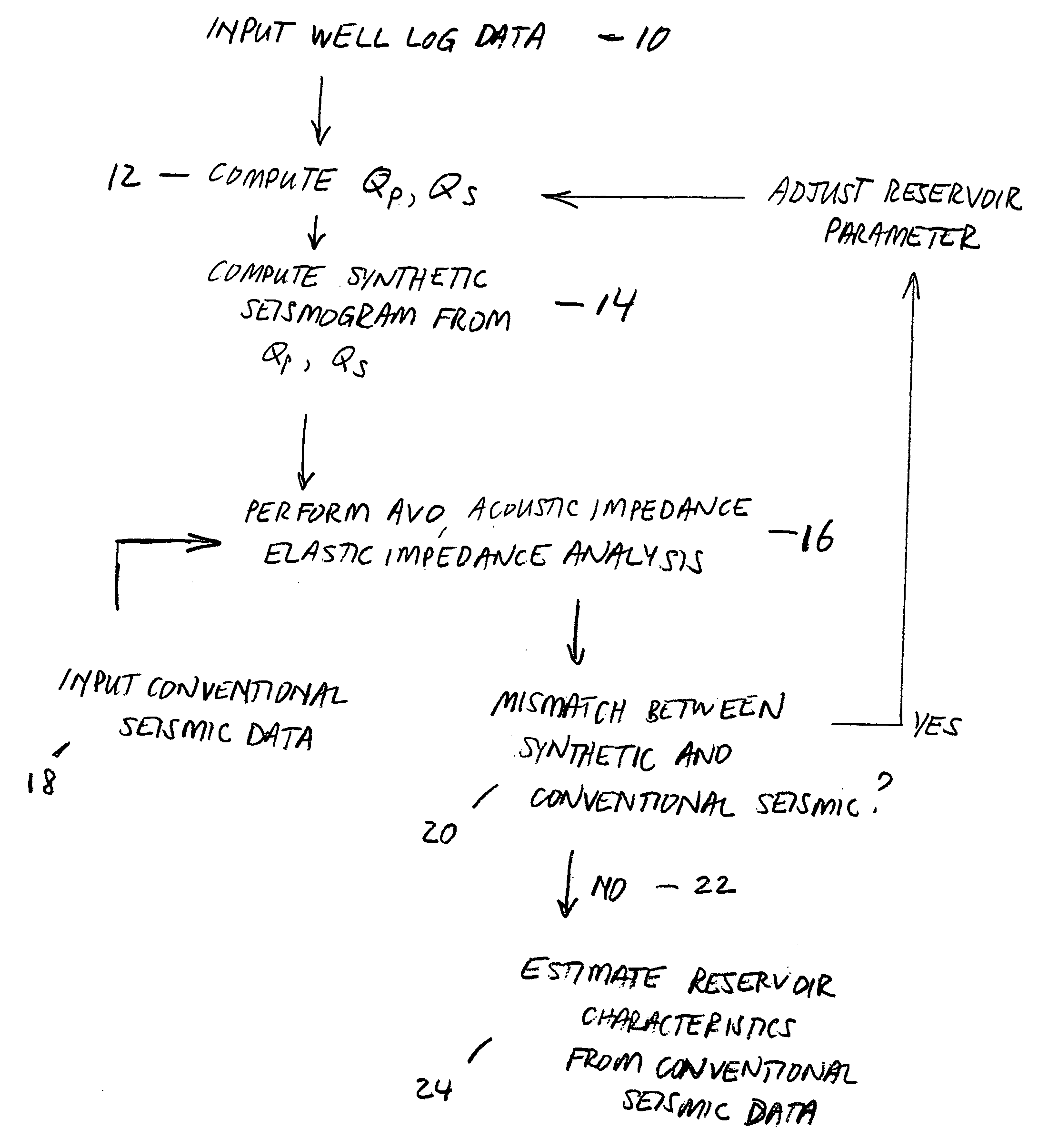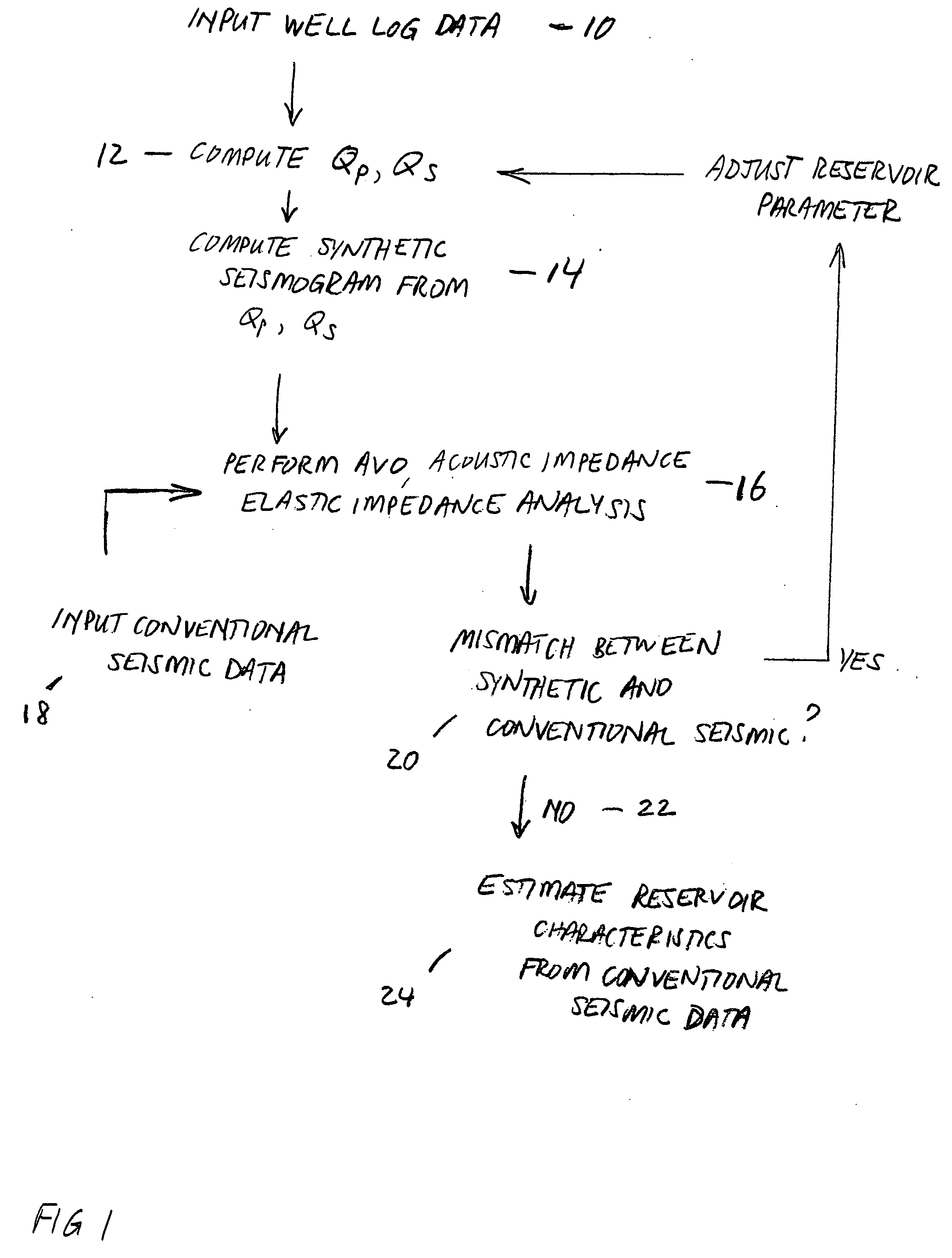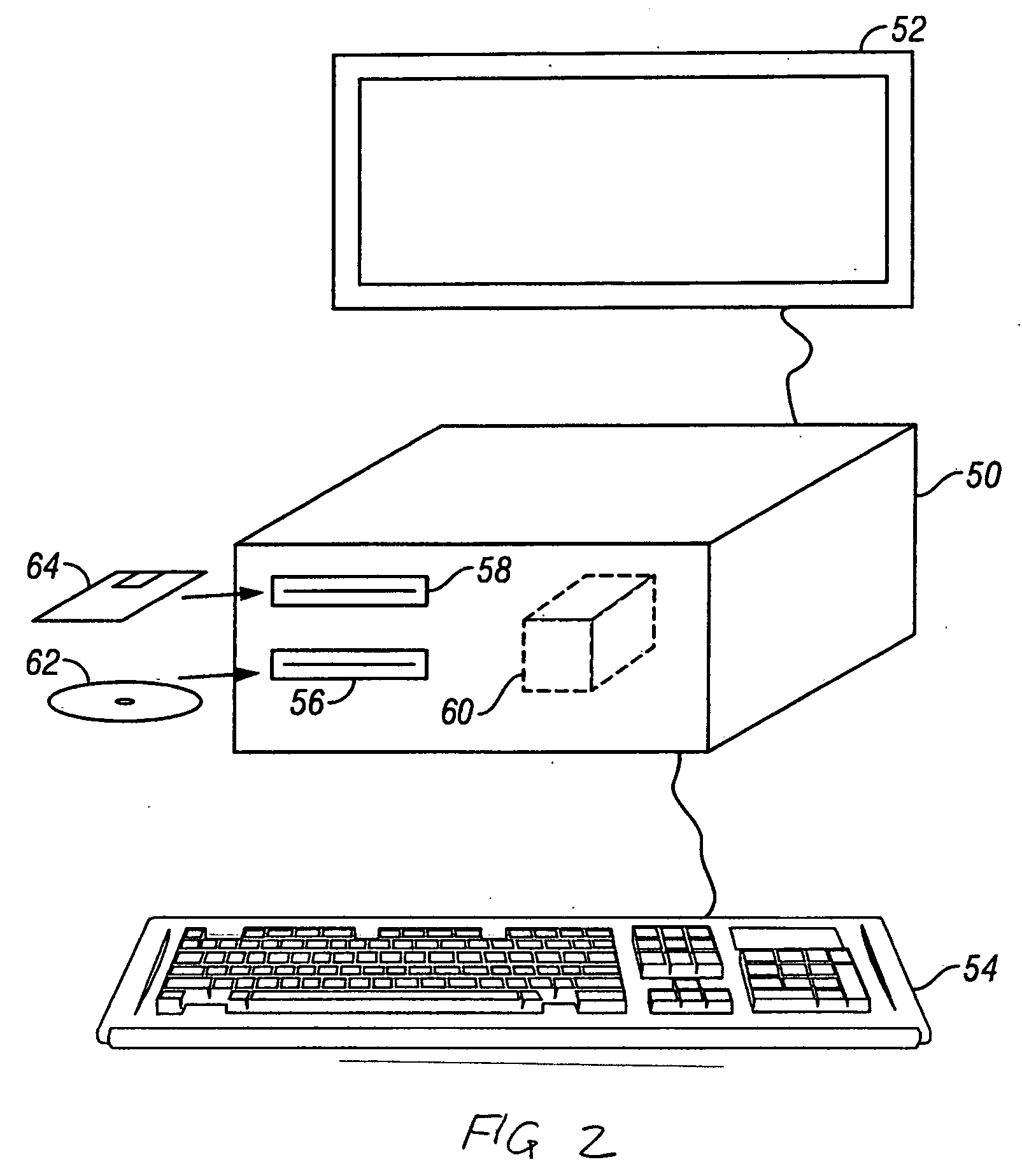Method for determining formation quality factor from well log data and its application to seismic reservoir characterization
a technology of formation quality factor and well log data, which is applied in the field of seismic data processing and interpretation, can solve the problems of not being able to take into account the attenuation of seismic energy and the spatial distribution of such attenuation
- Summary
- Abstract
- Description
- Claims
- Application Information
AI Technical Summary
Benefits of technology
Problems solved by technology
Method used
Image
Examples
Embodiment Construction
[0025] One embodiment of a method according to the invention is shown in a flow chart in FIG. 1. At 10, well log data, from a wellbore drilled through the subsurface Earth formations in the area of a seismic survey, are selected for interpretation. The well log data preferably include bulk density, compressional acoustic velocity and shear acoustic velocity. Other well log data may include measurements of a property corresponding to the fractional volume of clay mineral-based rock formation (generally referred to as “shave volume”), such as natural gamma radiation, thermal or epithermal neutron porosity, and measurements of a property which correlates to the fractional volume of the rock pore space filled with connate water (called “water saturation”), such measurements including, for example, electrical resistivity and thermal neutron capture cross section. The well log data are used to determine reservoir parameters, such as water saturation, mineral composition (lithology), fluid...
PUM
 Login to View More
Login to View More Abstract
Description
Claims
Application Information
 Login to View More
Login to View More - R&D
- Intellectual Property
- Life Sciences
- Materials
- Tech Scout
- Unparalleled Data Quality
- Higher Quality Content
- 60% Fewer Hallucinations
Browse by: Latest US Patents, China's latest patents, Technical Efficacy Thesaurus, Application Domain, Technology Topic, Popular Technical Reports.
© 2025 PatSnap. All rights reserved.Legal|Privacy policy|Modern Slavery Act Transparency Statement|Sitemap|About US| Contact US: help@patsnap.com



